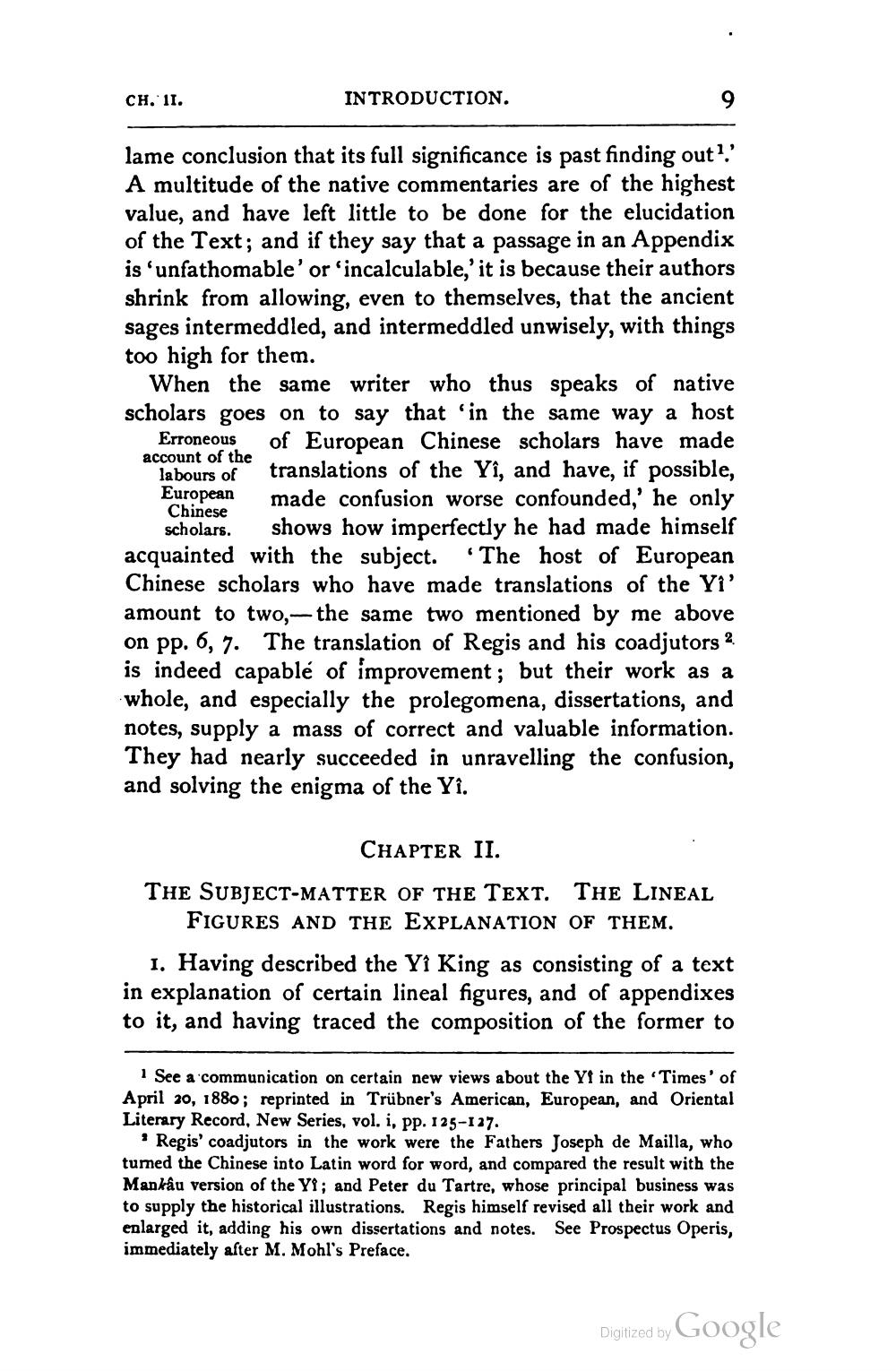________________
CH. 11.
INTRODUCTION.
lame conclusion that its full significance is past finding out?.' A multitude of the native commentaries are of the highest value, and have left little to be done for the elucidation of the Text; and if they say that a passage in an Appendix is 'unfathomable' or 'incalculable,' it is because their authors shrink from allowing, even to themselves, that the ancient sages intermeddled, and intermeddled unwisely, with things too high for them.
When the same writer who thus speaks of native scholars goes on to say that 'in the same way a host
Erroneous of European Chinese scholars have made account of the labours of translations of the Yî, and have, if possible, European made confusion worse confounded,' he only Chinese
Scholars. shows how imperfectly he had made himself acquainted with the subject. The host of European Chinese scholars who have made translations of the Yi' amount to two,- the same two mentioned by me above on pp. 6, 7. The translation of Regis and his coadjutors 2 is indeed capable of improvement; but their work as a whole, and especially the prolegomena, dissertations, and notes, supply a mass of correct and valuable information. They had nearly succeeded in unravelling the confusion, and solving the enigma of the Yi.
CHAPTER II. THE SUBJECT-MATTER OF THE TEXT. THE LINEAL
FIGURES AND THE EXPLANATION OF THEM. 1. Having described the Yỉ King as consisting of a text in explanation of certain lineal figures, and of appendixes to it, and having traced the composition of the former to
1 See a communication on certain new views about the Yt in the 'Times' of April 20, 1880; reprinted in Trübner's American, European, and Oriental Literary Record, New Series, vol. i, pp. 125-127.
* Regis' coadjutors in the work were the Fathers Joseph de Mailla, who tumed the Chinese into Latin word for word, and compared the result with the Mankâu version of the Y1; and Peter du Tartre, whose principal business was to supply the historical illustrations. Regis himself revised all their work and enlarged it, adding his own dissertations and notes. See Prospectus Operis, immediately after M. Mohl's Preface.
Digitized by Google




